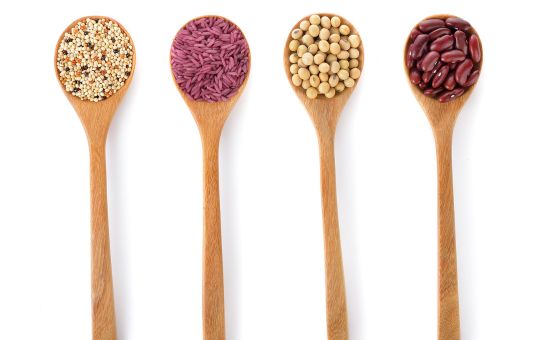Are you looking to explore the What are differences in millet vs rice taste? Discover the unique flavors, textures, and characteristics of these two popular grains. Find out which grain suits your culinary preferences.
What are differences in millet vs rice taste? When it comes to grains, millet, and rice are two popular options that have been consumed by people for centuries. These grains not only provide essential nutrients but also offer distinct flavors and textures to various dishes. Understanding the difference in millet vs rice taste can help you choose the right grain for your culinary adventures.
To know more about millet vs rice and the unique characteristics of millet and rice, their taste profiles, and some frequently asked questions about these grains keep reading this article.
Contents
What are differences in millet vs rice taste?- Explained
The taste of a grain can significantly influence the overall flavor of a dish. Let’s delve into the difference in millet vs rice taste and discover what sets them apart.
1. Millet Taste: A Nutty Delight
Millet, often referred to as a pseudo-grain, has a delightful nutty flavor that adds a distinct character to various recipes. Whether it’s cooked as a side dish, used in salads, or incorporated into baked goods, millet’s nutty undertones shine through, creating a unique taste experience.
2. Rice Taste: A Mild and Versatile Grain
Rice, on the other hand, possesses a mild flavor that serves as an excellent canvas for absorbing other flavors and seasonings. The taste of rice can vary depending on the variety, such as jasmine, basmati, or Arborio.
While some rice varieties have a slightly sweet aroma, others may have a more savory profile. The versatility of rice allows it to complement a wide range of cuisines.
| Taste Factors | Millet | Rice |
| Flavor | Nutty, slightly earthy | Mild, serves as a neutral base for other flavors |
| Aroma | Subtle, natural nuttiness | Varies based on the rice variety |
| Texture | Slightly chewy, grainy | Soft, fluffy, can be sticky or sticky depending on the variety |
| Sweetness | Minimal sweetness | Slight sweetness in some rice varieties |
| Savory Notes | None | Minimal savory undertones |
| Versatility | Adapts well to both savory and sweet dishes | Versatile and complements various cuisines |
| Complementary Ingredients | Nuts, herbs, spices, roasted vegetables | Meat, vegetables, sauces, spices, herbs |
This table highlights some of the key taste differences between millet and rice, allowing you to easily compare their flavor profiles and characteristics.

What are the Key Factors Affecting the Taste of Millet and Rice?
Several factors contribute to the taste of millet and rice. Let’s take a closer look at the key elements that influence their flavors.
1. Nutritional Content
Millet and rice have different nutritional compositions, which can impact their taste profiles. Millet is rich in fiber, protein, and various minerals, giving it a wholesome and slightly earthy taste. On the other hand, rice contains starch, which contributes to its mild and slightly sweet taste.
2. Processing Method
The processing method also plays a role in determining the taste of millet and rice. Whole grains, including whole millet and brown rice, retain more of their natural flavors compared to their refined counterparts. Refined grains undergo a milling process, which removes the outer husk, bran, and germ, resulting in a milder taste.
3. Cooking Techniques
The way millet and rice are cooked can further enhance or alter their flavors. For instance, toasting millet before cooking can intensify its nutty taste. Similarly, different cooking methods such as boiling, steaming, or simmering can influence the texture and taste of rice.
Read Also >>> Which One Is Best Quinoa Vs Millet For Weight Loss?
Which is better millet vs rice for weight loss?
When we talk about weight loss then millet vs rice for weight loss becomes a mostly asked question because both of them are included in a balanced diet. However, millet is generally considered a healthier option for weight loss due to its higher fiber content and lower glycemic index compared to rice.
The high fiber content in millet promotes satiety and helps control hunger, which can be beneficial for weight management. Additionally, millet provides a range of essential nutrients while being relatively low in calories.

On the other hand, rice can still be a part of a weight loss plan if consumed in moderation and paired with nutrient-dense foods. It’s important to consider portion sizes and opt for healthier rice varieties such as brown or wild rice, which offer more fiber and nutrients compared to refined white rice.
| Factors | Millet | Rice |
| Fiber Content | High fiber content helps promote satiety and control hunger | Varies based on the variety; Brown or wild rice offer higher fiber content |
| Glycemic Index | Lower glycemic index helps regulate blood sugar levels | Varies based on the variety; Brown or wild rice have a lower glycemic index |
| Calorie Content | Relatively low in calories | Varies based on the variety; Brown or wild rice has a lower glycemic index |
| Nutrient Profile | Provides essential nutrients like vitamins and minerals | Provides some nutrients, but varies based on the variety |
| Satiety | Keeps you feeling fuller for longer | Provides a moderate level of satiety |
| Versatility | Can be used in a variety of dishes | Can also be incorporated into various recipes |
Read Also>>> How to Add Millet to Bread?
Final Thought
Understanding the difference in millet vs rice taste can open up a world of culinary possibilities. Millet’s nutty delight adds a unique flavor dimension, while rice’s versatility allows it to adapt to various recipes. Factors such as nutritional content, processing methods, and cooking techniques all contribute to the taste of these grains.
By exploring different varieties and experimenting with spices and seasonings, you can create flavorful dishes that cater to your personal preferences. Whether you’re a fan of millet’s nuttiness or rice’s mildness, both grains have their own charm in the realm of taste.
FAQs about Millet vs Rice Taste
Here are some frequently asked questions about the taste of millet and rice, along with their answers:
Does Millet Taste Similar To Rice?
No, millet and rice have distinct taste profiles. Millet has a nutty flavor, while rice offers a milder taste.
Can Millet Be A Good Substitute For Rice In Recipes?
Yes, millet can be an excellent substitute for rice, especially for those seeking a different taste and texture.
Which Type Of Rice Has The Strongest Flavor?
Fragrant rice varieties, such as jasmine and basmati, have a stronger flavor compared to other types of rice. These aromatic varieties add a delightful aroma and a subtle floral note to dishes.
Can The Taste Of Millet And Rice Be Enhanced With Spices And Seasonings?
Yes, both millet and rice can be enhanced with the addition of spices, herbs, and seasonings. They act as flavor enhancers and can elevate the taste of these grains in various recipes.
Are There Any Regional Cuisines That Specifically Use Millet Or Rice?
Yes, certain regional cuisines have a strong association with either millet or rice. For example, millet is a staple grain in many African and Asian countries, while rice plays a central role in Asian, Indian, and Latin American cuisines.

